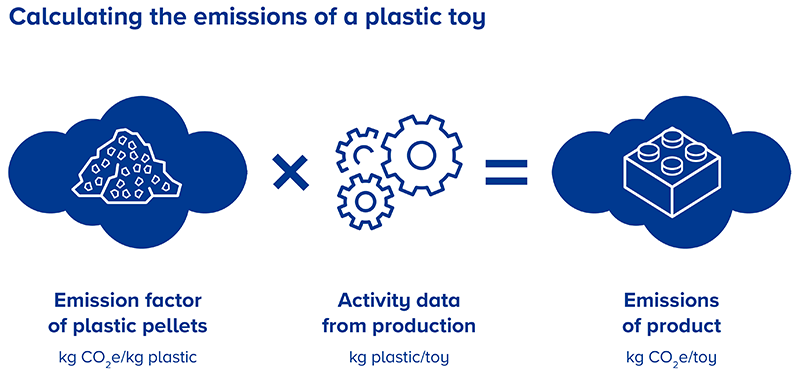All you need to know about emission factors
January 3, 2023Emission factors (EFs) are an integral part of calculating a carbon footprint. They are representative values that quantify the environmental impact of products and processes, forming part of the calculation to estimate the greenhouse gas (GHG) emissions of a particular activity or process.
An EF represents the average GHG emission rate of a specific source and could be expressed as kg CO2e/kW h, meaning the number of kilograms of carbon dioxide equivalents (CO2e) emitted per kilowatt hour of natural gas used.
Download for even more insights
Global warming potential and carbon dioxide equivalents
To make the data comparable across different GHGs, emissions are generally converted to a unit known as carbon dioxide equivalents, or CO2e. This unit is measured in kilograms and includes the impact of all other GHGs with their relative global warming potentials (GWPs).
The Intergovernmental Panel on Climate Change (IPCC) quantifies the GWP of the seven main greenhouse gases and groups of gases, with CO2 taken as the base unit. For emissions calculations, it’s common to use the GWP-100, which refers to the global warming potential of the gas over 100 years, showing the long-term impact of the pollutant.
How emission factors are determined
Emission factors are generally expressed as the weight of CO2e divided by a reference unit. This reference unit could represent the weight, volume, distance, or duration of the activity, or even be a custom unit unique to the scenario. It’s important to pay attention to the reference unit, to make sure the data input is consistent with the unit of the EF.
There is a range of ways that EFs can be determined, including tests at the source, mathematical modelling, and balancing materials. This variability means that different EFs, even for the same product or activity, can vary greatly. In many cases, EFs represent the average of all the available data of high-enough quality.
Emission factor databases
Emission factors can be accessed from a range of sources, including comprehensive databases. Common open-source databases are provided by environmental agencies like DEFRA in the UK or independent bodies like the IPCC. Examples of commercial databases include Ecoinvent and Agri-footprint, while other sources include research papers and some industry-specific databases.
How to use emission factors in calculations
Emission factors provide values for the comparative environmental impact of raw materials and other activities that a company may not be able to calculate for themselves. This enables the carbon accounting of any product or service, even if it is just a first estimate. However, EFs alone are not adequate data for calculating a carbon footprint.
While they are an incredible source of data on the GWP of materials and processes, what they do not provide is the amount, distance, duration, and other relevant aspects of the input materials and processes. These important details are referred to as the activity data. A product’s emissions are calculated by multiplying the EF by the activity data, so at a minimum, the reporting company will always have to supply activity data to calculate a carbon footprint.

Limitations of emission factors
Usually, emission factors are determined with a cradle-to-gate system boundary, which means they cover the emissions from the very beginning of the production of all raw materials until the product leaves the gate of the producing company. Some databases differ from this approach, and the system boundaries of processes and services could be completely different, so when including these into carbon accounting, it should be done with care.
Even for the same material, EFs can also differ in aspects like the research methodologies, regions covered, time frames assessed – therefore, data quality can vary and be less relevant to the actual product. There may also be a choice of several EFs for one product due to differing production processes. Factors such as the region and the reference unit help determine the best match.
Primary data over emission factors
It’s important to understand that an emission factor is just an estimation using data and assumptions from studies. In some cases, the numbers come from a generic database or represent a market average and will have little connection to the reality of the production process. For this reason, where possible, replacing EFs with primary data will always be an improvement to the calculations.
EFs are necessarily conservative estimates because they have to account for all the variations within that category. Therefore, primary data specific to the actual product will always be more accurate and will likely even result in a lower target for emissions reduction.
Replacing EFs with primary data also means that subsequent emissions reduction efforts can be much more focused. By using the closest possible estimation of the actual emissions, carbon “hotspots” can be identified and reduced, for example by replacing a raw material or increasing the efficiency of a process.
Sourcing primary data from up and down the value chain will also highlight reduction areas for suppliers and customers. Tools such as ClimatePartner’s Network Platform can greatly streamline the process of calculating your company's scope 3 emissions.
Every little bit counts
Emission factors are essential for calculating the emissions of any product, service, or company and help establish a baseline from which to develop emissions reduction strategies. EFs are a valid, indispensable resource, but they are not the best or only option for calculating a carbon footprint. Every little bit of primary data that can be included in your calculations will provide a more accurate estimate and give you more concrete targets for reduction measures.
For companies just getting started on the road to net zero, the first step is to calculate your corporate or product carbon footprints. ClimatePartner can help you through the process of calculating your emissions and then setting reduction targets, so contact us to start your climate action now.
Please fill out the form, we will send you the e-book by email.